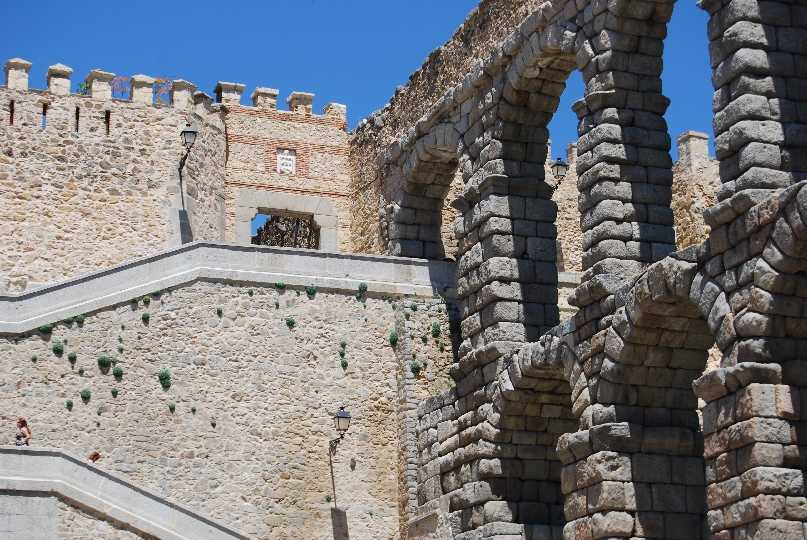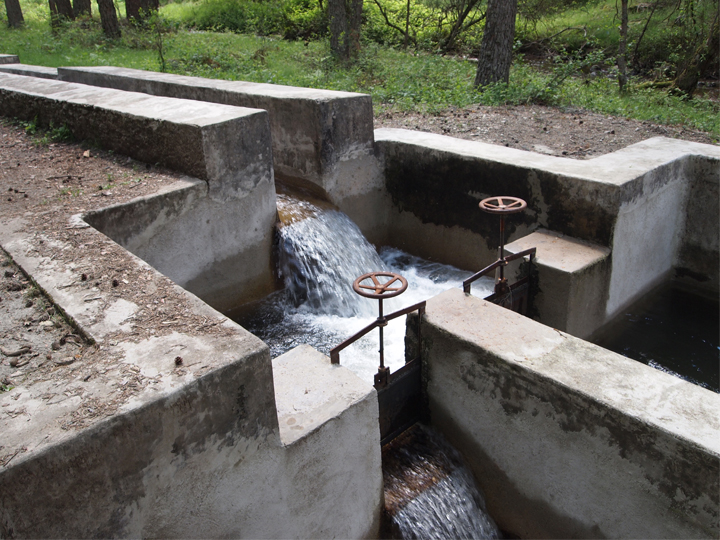
Historically, the Segovia Aqueduct is divided into well-differentiated sections: the extra-urban area, where the catchment area and part of the pipeline are located; the peri-urban section. Conduction, urban section. Conduction and distribution, overhead and monumental aqueduct and underground canal.
Read more...
Route
The Segovia Aqueduct is historically divided into three distinct sections:
- Extra-urban section, where the catchment and part of the conduction is located.
- Peri-urban section. Conduction.
- Urban section. Conduction and distribution.
- Overhead and monumental aqueduct.
- Underground canal.
The water intake that can be seen today is mentioned in written sources in the 15th century and is carried out by means of a weir on the River Frío, in the Acebeda valley. After crossing different natural sites of exceptional beauty, it reaches Segovia by means of a slope. Before rising over the arches, the water passed through two decanters. The route inside the walls begins at the Postigo del Consuelo, developing a sophisticated distribution system by means of manholes, which in turn were subdivided into smaller branches that supplied fountains and cisterns in private houses. The whole of this last section went underground until it reached the current Alcázar, the end point of the route, which was known as the ‘Mother of Water’.












